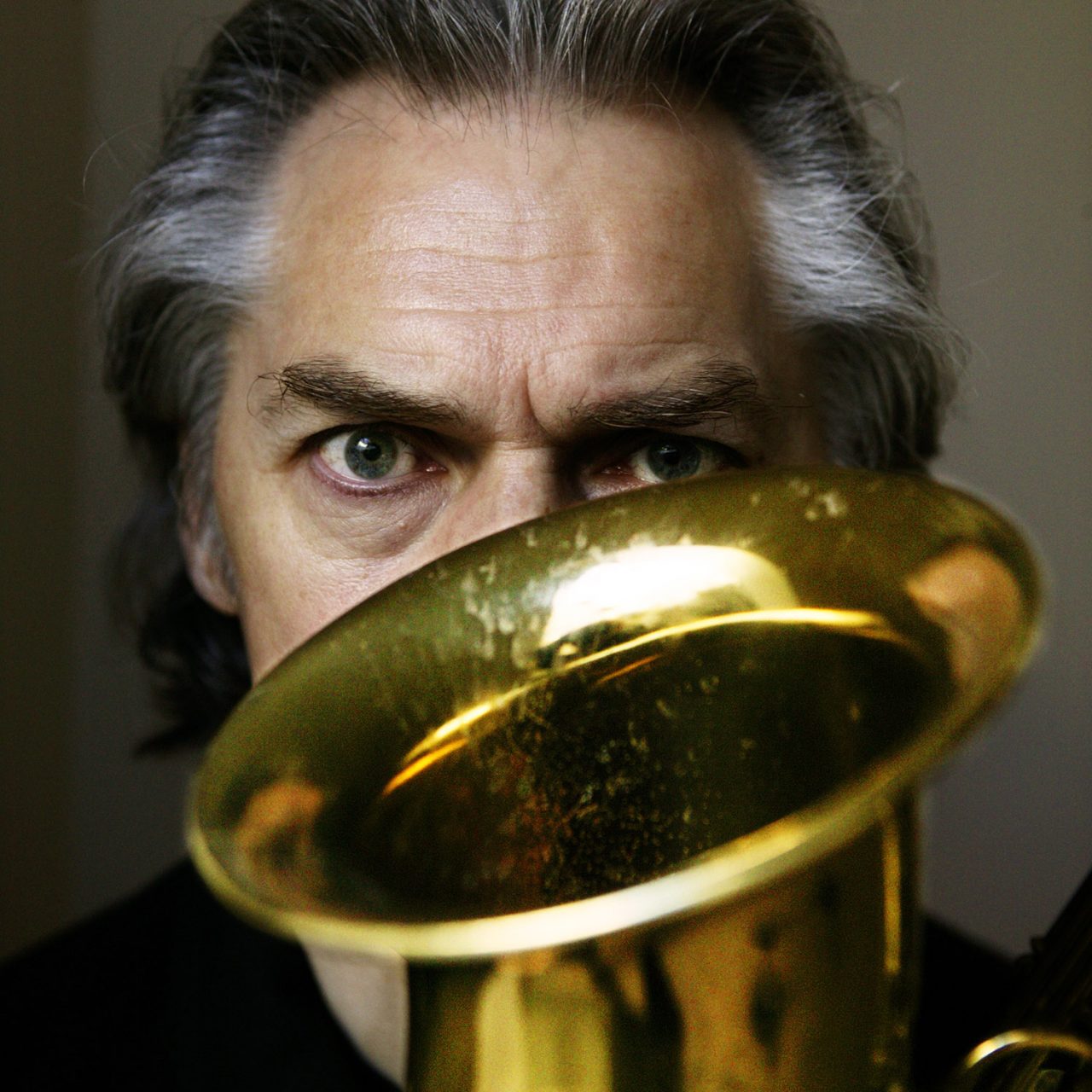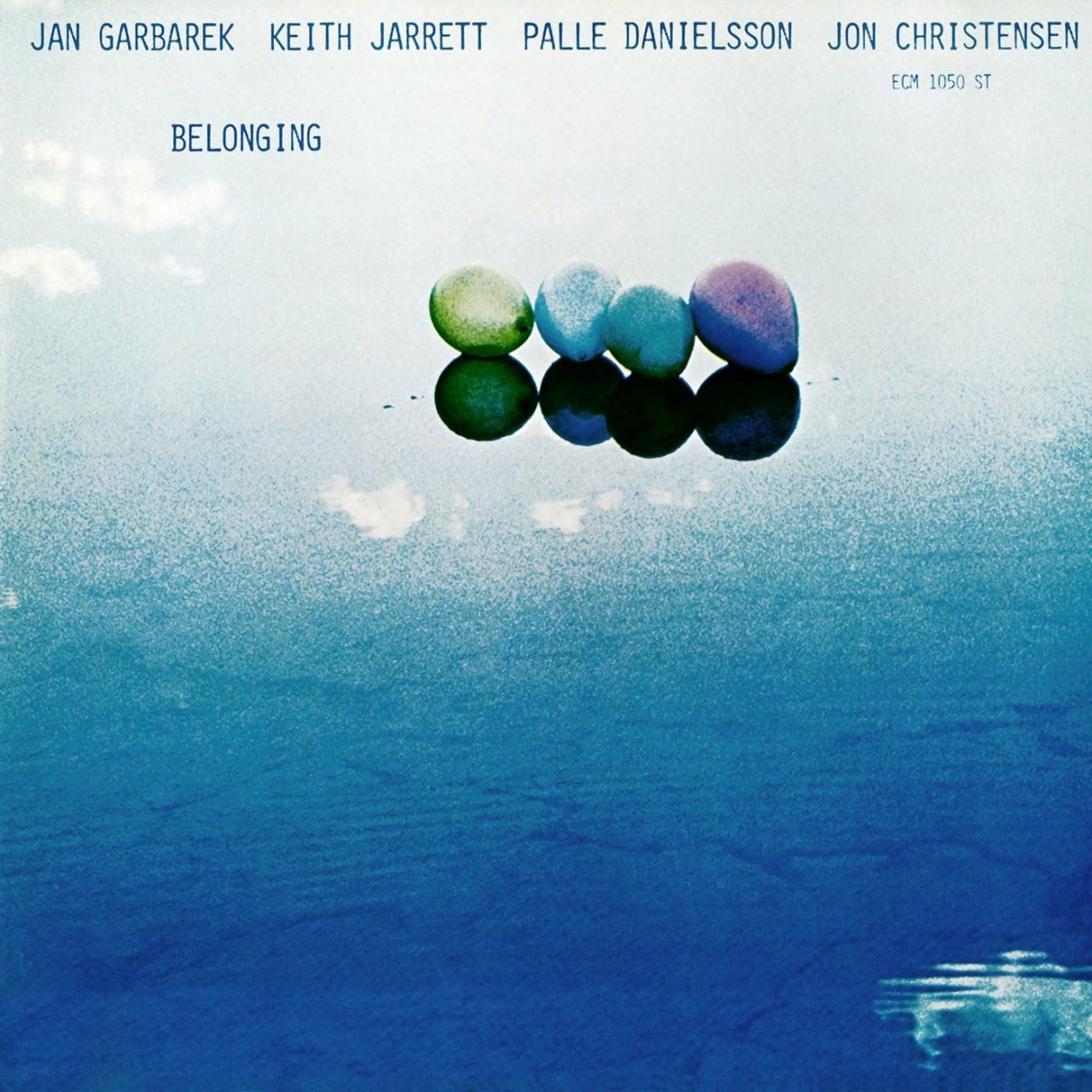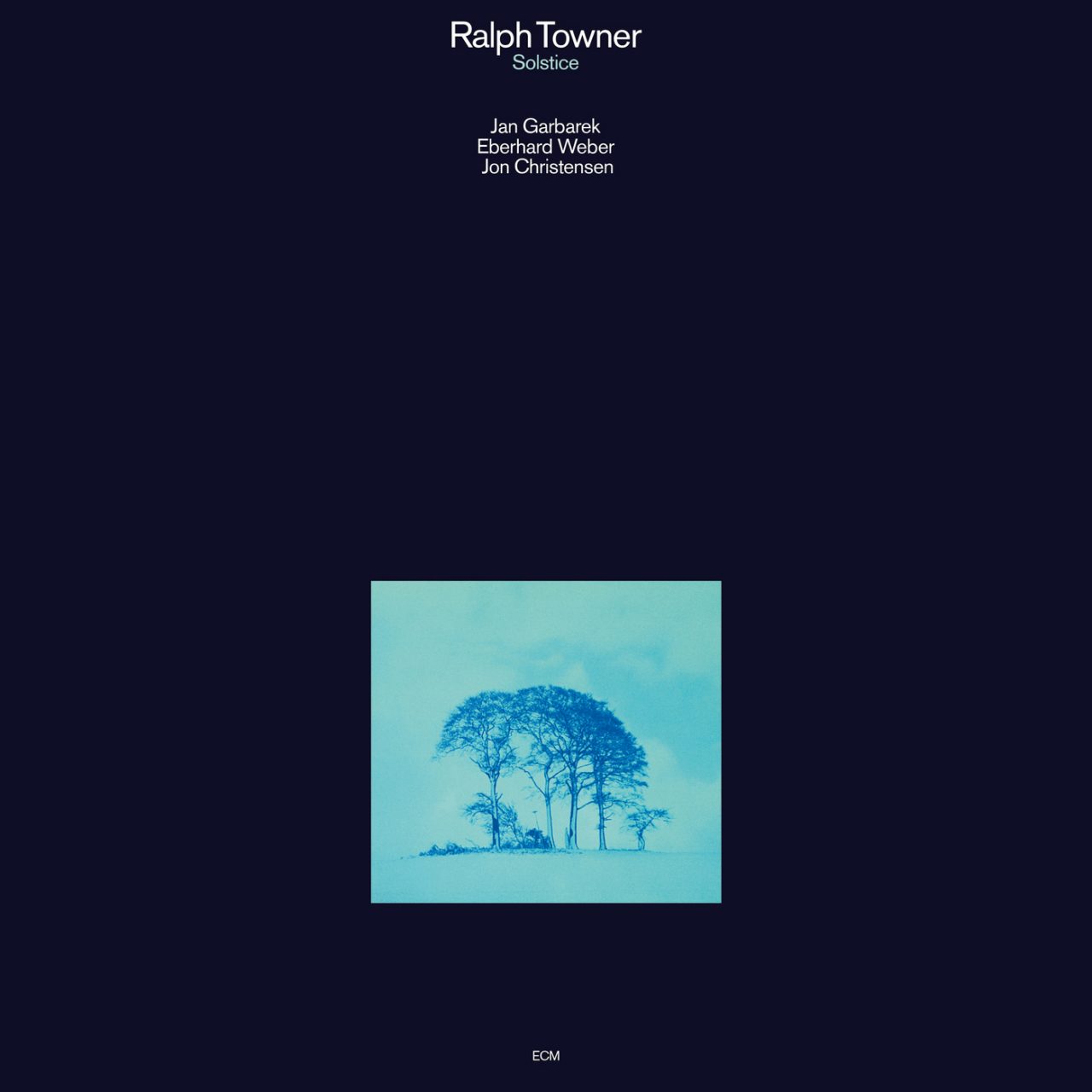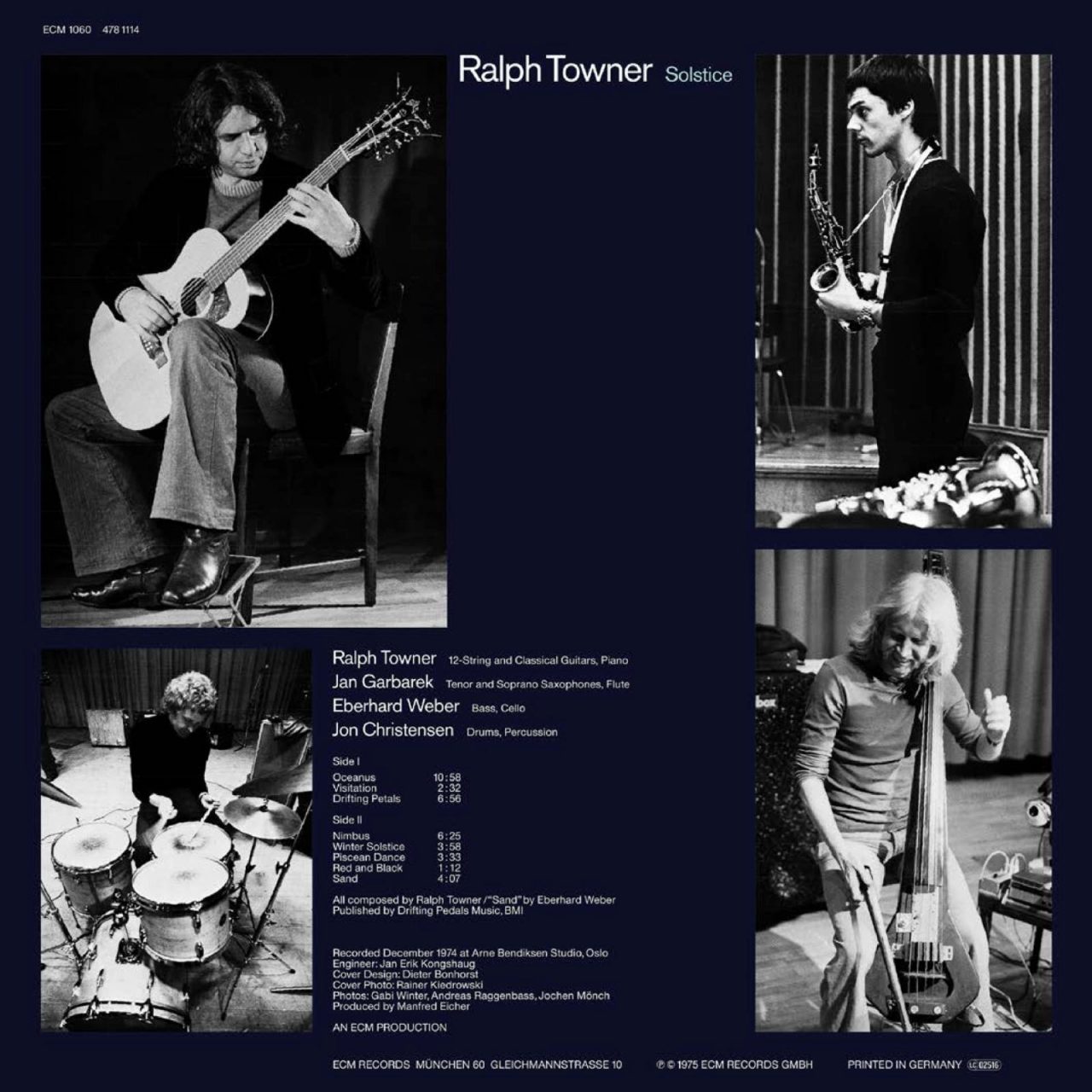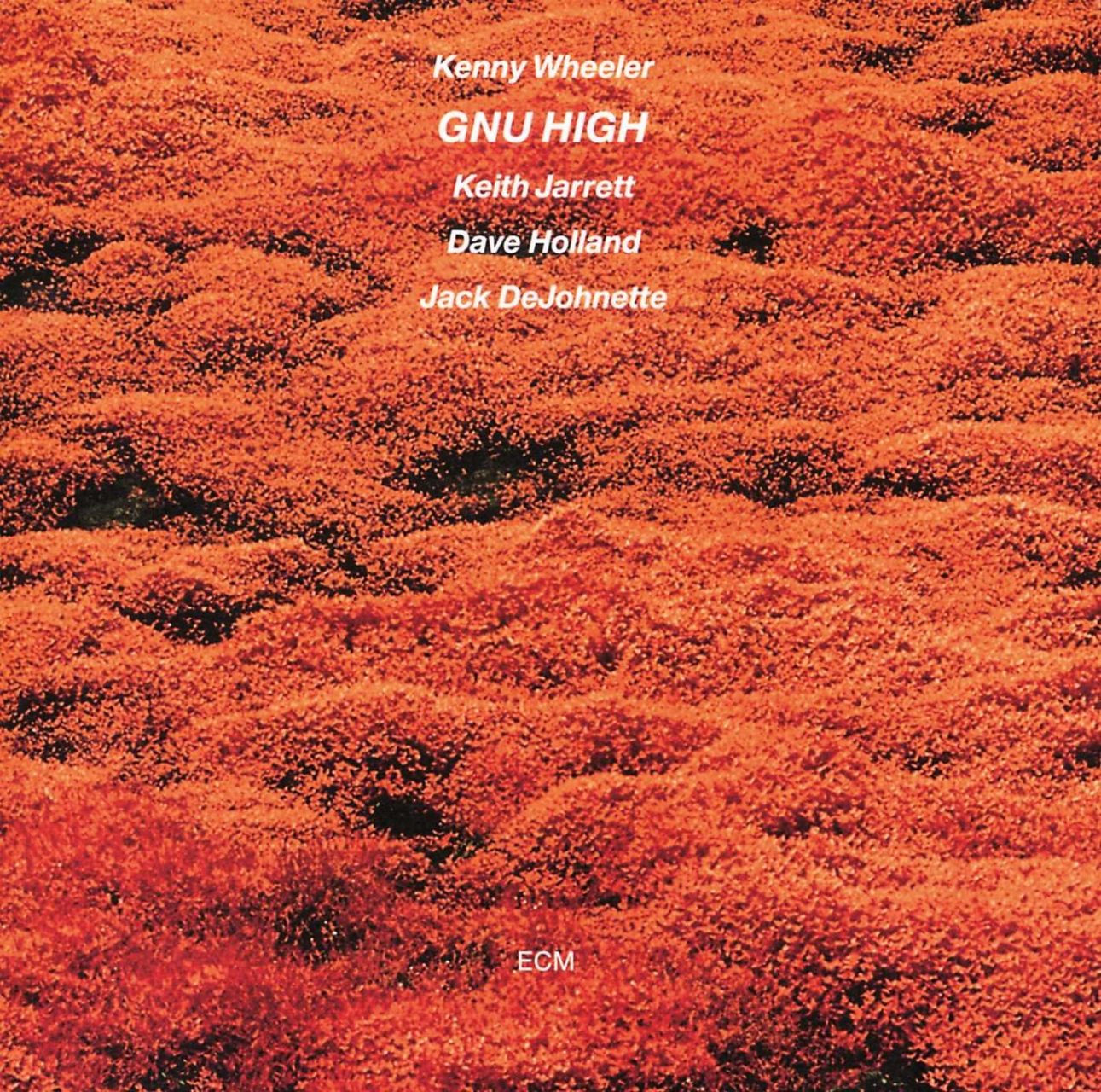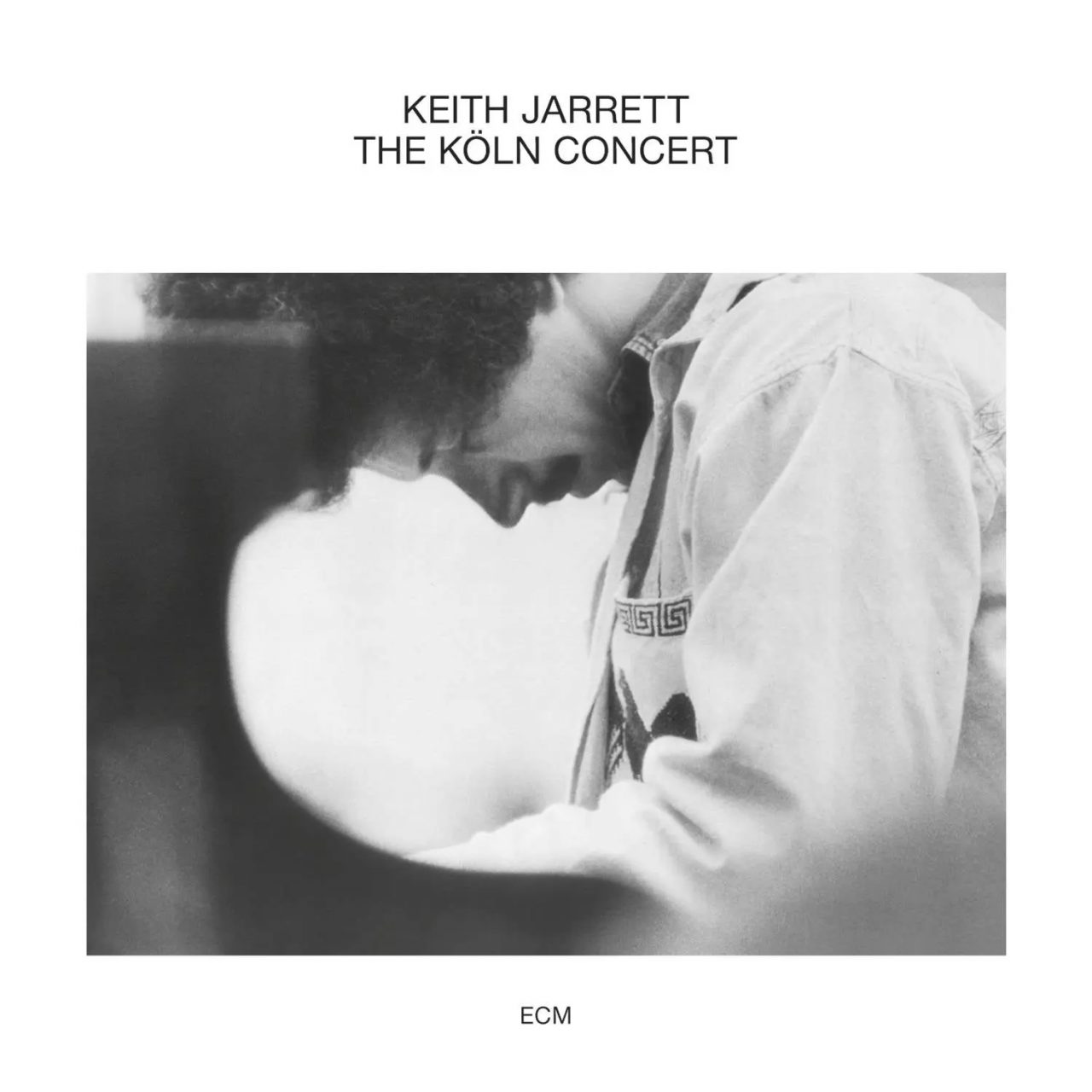In the dog days of the post sixties excitement, popular music after Led Zeppelin slowly descended into the prog rock abyss. I am probably referring here to something like the double album Tales of Topographic Oceans by Yes (1973), despite the fact I had loved The Yes Album (1971). Casting around for something new to listen to I bought my first purely instrumental album, Freedom Is Frightening (1973) by Stomu Yamash’ta. It helped that I had seen an exceptional live show by his Red Buddha Theatre at Liverpool University, and now I was ready to listen to a whole album without lyrics, without what I called songs. Of course I had heard and loved Kind of Blue by Miles Davis, but at the time I only bought contemporary albums. I became a librarian much later.
I am not sure which ECM album I bought first but it was either Belonging by Keith Jarrett (1974) or Solstice by Ralph Towner (1975). It doesn’t really matter since they both heavily feature Jan Garbarek on saxophone, who became the lodestar of my new music obsession. It wasn’t as much fun as rock music, since no-one I knew had ever heard of any of these people. Not only that but this music had a lonely, plangent quality, a spiritual essence and purity which encouraged solo, contemplative listening.
At the time the clarity of the sound led to it being called chamber jazz. This was meant to be demeaning, that is lacking the funk, the blues of “real jazz”. Yet we can see now, with ECM progressing into its 55th successful year, that they were in fact creating a new genre that even today sounds unique. Try saying they weren’t “funky” when you hear the emotion pouring out of Jan Garbareck’s saxophone on Nimbus (from Solstice), for example. Also they were running against the grain, this was primarily acoustic music, there was no electric rock in this jazz. To this day it is my greatest pleasure to hear real music, that is music played without processing, on a real instrument, played by a master who talks directly to me. Although of course in this case it has been beautifully recorded by Jan Erik Kongshaug, produced by Manfred Eicher and pressed onto vinyl. Yet there is no doubt ECM records had a clear and ageless acoustic of their own, which they maintain to this day.
As time went on these two albums opened up a new world, featuring as they do a series of artists who branched out to make their own albums, although only a few matched up to these two initial recordings. From this moment on ECM records became a unique touchstone in my life. I did splash out on the 3 disc box set Keith Jarrett Solo Concerts Bremen/Lausanne, but later much preferred The Köln Concert, it is a lot crazier, yet more direct. Keith Jarrett was also the pianist for another much played album back in the day, Gnu High (1976) by Kenny Wheeler, along with Dave Holland and Jack DeJohnette. A few years later Eberhard Weber, the bassist on Solstice, went on to make Later That Evening (1982), which became a firm favourite. I used to buy this record as a present, to demonstrate the wonders of ECM to my friends, not always successfully. Later That Evening also introduced me to the guitarist Bill Frisell, who for a brief period of time became an ECM artist and recorded extensively with Paul Motian to great effect. Ralph Towner formed the group Oregon with Paul McCandless, Glen Moore and Collin Walcott, recording for both Vanguard and ECM, but managed to keep the same aesthetic. And then of course Collin Walcott formed Codona on ECM with Don Cherry and Naná Vasconcelos, the family tree continues to grow. You end up buying a lot of records!
Jan Garbarek meanwhile went on to record a plethora of great albums for ECM, of which I Took Up The Runes (1990) stands out, not forgetting the atmospheric Magico trio albums with Charlie Haden and Egberto Gismonti. With his keening tone he always sounds like he is playing on some windswept cliff or at the end of a long fjord, it was a sound that redefined what jazz could become. Later on he made the unique and groundbreaking Officium (1994) with the classical male vocal quartet Hilliard Ensemble, which leads us neatly into the ECM New Series. This New Series is ECM’s classical label featuring both early and contemporary classical music. Albums of note, to me at least, include Music for 18 Musicians by Steve Reich and Tabula Rasa by Arvo Pärt. ECM albums may have some of their unique quality due to the way Manfred Eicher chooses to work. Normally he will record for two days, mix on the following day and that’s it. This lends the albums a fresh, concentrated and improvised feel, the quality may vary, but as we know he does not release everything that is recorded.
There is no doubt that Manfred Eicher and ECM (which stands for Edition of Contemporary Music) redefined the meaning of jazz, enlarging the spiritual and universal qualities of the music. You only need to take a look at their roster since the first release in 1969 by Mal Waldron to see it now encompasses everything from the raucous Art Ensemble of Chicago, the masterful Tunisian oud player Anouar Brahem to the Greek soundtrack composer Eleni Karaindrou. This music is not defined by genre or tradition but a certain seriousness and elevating intent, their motto being “the most beautiful sound next to silence”. In addition they are a family, projects are often made by combining disparate influences, the musicians are tested and exercised by the unusual combinations set, I presume, by Manfred Eicher or Steve Lake. Thus new and original music is made, long may it continue.
This blog was partly inspired by the review of four new ECM albums by Richard Williams on his own blog thebluemoment.com. In fact it could easily have been his own reviews in Melody Maker back in the early 70s which prompted me to buy Belonging and Solstice in the first place!

